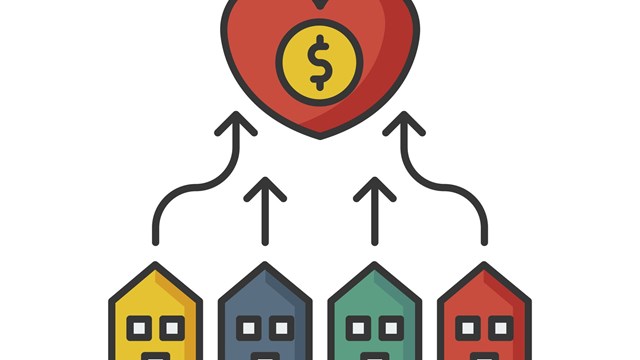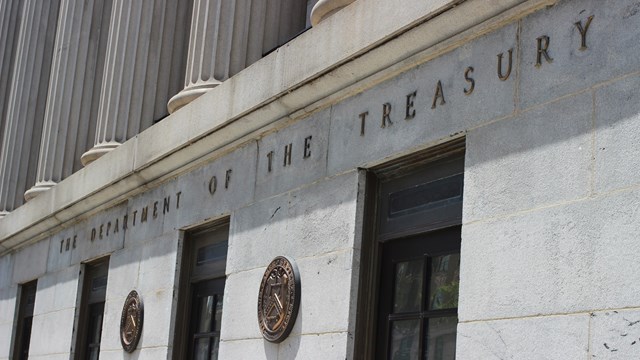To address the problem of steeply escalating taxes on co-ops and condos, the Council of New York Cooperatives and Condominiums (CNYC) created the Action Committee for Reasonable Real Estate Taxes in February of 1990. During their study and investigation, the group discovered that there was a gross disparity between the taxes paid by co-op and condo owners and those assessed to private homeowners; according to the committee's findings, co-op and condo apartments in buildings containing more than three units were paying three to five times more in property taxes than single-family homes of comparable value. Co-ops and condos were being taxed as Class Two income-producing properties, rather than as the single-family homes that most of them were, simply because they happened to be apartments in large buildings.
"State law requires us to assess co-ops and condos as if they are income-producing properties," says New York City Finance Commissioner Martha E. Stark, "and co-ops as if they are rent-regulated apartments. If parity is the goal, then co-ops and condos should be valued like other homes - based on sales, not income."
Martin Karp is the current chairman of the CNYC's Action Committee and is working on proposals to equalize the city's current property tax structure. Under his leadership over the last decade, the committee began a successful lobbying campaign to level the playing field and equalize co-op and condo real property taxes.
"Homeowners in New York City co-ops and condominiums have been eligible for an abatement on their property taxes since 1996," says Karp. "In reviews by city and state government representatives on tax policy, it has been agreed that there should be no difference in tax treatment between owner-occupied one-, two-, or three-family homes in Class 1 and owner-occupied co-op and condo apartments in Class 2 [properties]."
Karp and his committee have had some help along the way. In his 1996 Financial Plan - and after a lot of political discussion - former New York City Mayor Rudy Giuliani offered a property tax reduction for co-op and condo owners. According to Karp, the abatements were 25 percent for apartments with average assessed values of $150,000 or less, and 17.5 percent for apartments with assessed values greater than that figure. This abatement program started to address the disparity in taxes - but not everybody who owned co-op or condo apartments in the city qualified.
"People whose apartments in the city are their primary residence and who hold fewer than three apartments are eligible for the abatement," says Eliot Meisel of the Manhattan law firm of Brill & Meisel. "[The abatement] is designed to give a break to people who are actually residing in their apartments. Since the state has not been responsive to the needs of New York City residents in tax parity, New York City has had to have convoluted methods of trying to create a greater degree of equity between co-op and condo owners and private homeowners."
Since the initial legislation, the abatements have continued to be a political battle amongst New York lawmakers and advocates. The Department of Finance announced in 2000 that joint efforts to equalize New Yorkers' property tax burden had reduced the private homeowner bias by $167 million annually - but a gap of $180 million a year remained between homeowners and shareholder/ unit-owners. So the tax inequity still exists, though both the CNYC and Department of Finance continue to work on it, and abatements continue to be granted in the meantime.
According to Stark, "As it stands now, there are some co-ops and condos - particularly in Manhattan - that benefit from the current system, and others that do not. Finance is undertaking a broad analysis of possible legislative changes that would make the property tax system simpler, fairer and easier to understand, and this will include changing the way [the department] values co-ops and condos."
The legislative authorization for the current abatements was set to end on June 30, 2004, but on May 10th, the state Assembly voted in favor of another four-year extension on the abatement program, with the state Senate following suit a week later. The abatement, which provides an interim and partial resolution of the disparity between the taxation of New York City residents in one-, two-, and three-family homes in Property Class 1 and co-op and condominium apartments in Property Class 2, awaits Governor George Pataki's signature to be official.
"The mayor supports an extension of the current co-op/condo abatement program, and has budgeted for it," says Stark, who adds that the state is analyzing a way to come up with a system of real, permanent reform. "It would be irresponsible to advocate major changes in the property tax law without first determining what the impact would be."
"It always comes down to the wire, but we expect that the program will be extended for another two years," says Meisel, although he admits that the tax abatement is not a permanent solution. "There has been an effort for years to have a more permanent solution. [The CNYC] have been very active lobbying to get the law changed, but it's a difficult thing to do because there is a very strong voting bloc among the single-family homeowners."
Karp explains why the tax inequity still exists despite its magnitude and distribution. "It is not possible to simply move co-ops and condos into Class 1," he says. "One reason is that the benefit should apply only to eligible owner-occupied co-op and condo apartments."
According to Paul J. Korngold, an attorney with Tuchman, Katz, Schwartz, Gelles, Korngold & Weiss, LLP, a Manhattan-based law firm, "Real Property Tax Law section 581 requires that co-ops and condos be assessed as rentals. This law was passed because there was a fear in the co-op and condo community that as a result of the decision in River-House Bronxville v. Hoffman, taxes would skyrocket. The law was designed to limit the taxes on co-ops and condos, not to tax them as investment properties."
According to the New York State Office of Real Property Services, in River House-Bronxville, the trial court calculated the assessment of a co-op apartment building by analyzing sales of stock in the co-op, projecting those prices throughout the building, totaling them, and reducing the result by a developer's discount; the result was a hypothetical sales price for the complex. On appeal, the Second Department remanded for a hearing on the cost less depreciation of the building - to ensure that the method adopted by the trial court was not producing a value in excess of that figure - and for the "submission of evidence bearing on the proper discount rate from the gross sales prices to be employed (434 N.Y.S.2d, at 466)."
Prior to the decision on remand, section 581 was enacted. In his opinion on remand, the judge presiding over the case declared that, "Under the new statute. . .condominiums and cooperative apartment buildings are to be assessed as if they were conventional apartment houses, the occupants of which are rent-paying tenants. It has long been the law in New York that the preferred method of valuing such income producing properties is the income approach. Thus it appears that the effect of the new statute is to reinstate the income approach as the preferred method of valuing cooperatives for assessment review purposes and to effectively overcome this Court's reliance upon the market data approach in this case (emphasis added)."
"If the River-House case was the law and not Section 581," says Korngold, "the assessed value of a co-op or condo would be based on the sales price of the apartments. That would be a disaster, because if you ever added up the values of the apartments as co-ops, then added the amount of the underlying mortgage on a cooperative building, you would find a tax assessment far greater than currently is in existence. In fact, in some buildings, I have seen sales prices of one unit being in excess of the assessed value of the entire building."
When Section 581 was passed in 1981, there was essentially only one tax class, and no one realized that Class 1 would be created, giving favored treatment to one-, two-, and three-family homeowners. Also in 1981, co-op conversion was only beginning, and with the exception of section 213 co-ops and government-assisted co-ops - like Mitchell-Lama buildings, for example - there was no middle-income co-op community. Most co-ops in 1981 were in Manhattan and occupied by the wealthy. The number of cooperative and condominium apartments increased substantially after 1981, primarily because of conversion activity.
According to Korngold, the tax abatements are a stopgap measure, but a political necessity for a number of reasons - not least of which is that the city is losing money because of co-op and condo owners paying less taxes. There are other reasons as well.
"Politics, budgets, ignorance, inertia - take your pick," says Korngold. "Also there would be many technical details if you taxed co-ops as single-family homes. How do you assess co-ops that are owned by sponsors? Condo apartments have a separate tax assessment, but co-op apartments are not separately assessed; it is the building that is assessed. Condos are owned by their occupants, whereas a co-op is not real property. It is not so simple as some people would think."
According to the city finance department, the cost for the abatement program is roughly $256 million in 2004 and will be $269 million in 2005. "I doubt anyone has actually focused on the exact [dollars]," says Korngold, "but obviously, if co-ops pay less, someone has to pick up the slack - money doesn't grow on trees. But who do you suggest should pay the difference? Homeowners? Commuters? The reality is that the city has a need for [money] and each constituency thinks that someone else should pick up that slack."
Tax abatement savings are supposed to go back to the co-op and condo owners, but co-op boards sometimes adopt a policy of special assessment to get around this - sometimes with troublesome results.
"In condos," says Korngold, "[savings] go to the condo owners. In co-ops, however, they go to the board, which are required by law to give them back to the co-op owners. Many boards get around that by "˜giving back' - passing special assessments equal to the amount of the rebate - so the co-op owners get zero. This is not in the spirit of the legislation, but it is widely done."
"In a co-op, it goes back to the cooperative corporation because it's all one tax lot," Meisel adds. "So the co-op pays the taxes and the tax rebate goes back to the [corporation], which is required to rebate the taxes to the resident shareholders who are entitled to it - and that may not be all the residents."
"With a condo," continues Meisel, "any refund comes back to the management agent and is allocated to each of the individual tax lots. It's up to the managing agent to get it back to the appropriate people - which becomes problematic if people move. Do you give it back to people who are there, or the ones who paid taxes the prior year? There are a lot of issues."
As co-op and condo owners battle for fair treatment in their taxes, the Action Committee is poised to make sure that they are not punished simply because of the type of home they own. This is a fight that will most likely continue in the legislature in the upcoming years, says Korngold. "I think in times of record-breaking co-op sales prices, there is not a lot of sympathy for co-op owners in the legislature. This is not a simple problem."







Leave a Comment